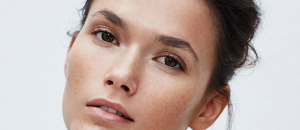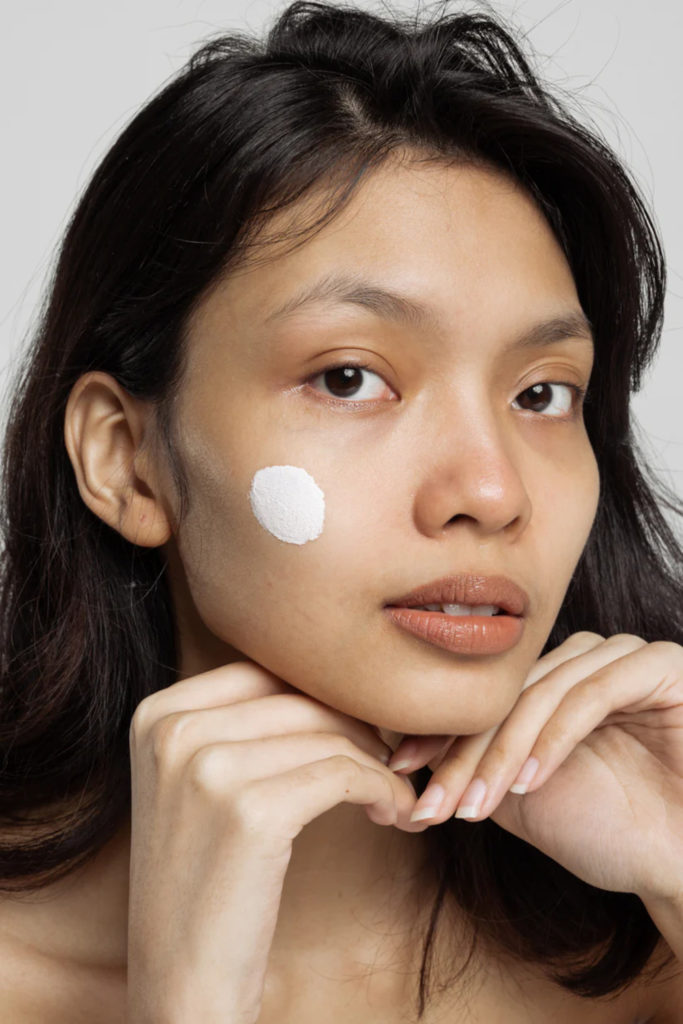Endocrine Disruptors: The Beauty Ingredients We’re Avoiding In 2024
By
1 year ago
How certain cosmetics can harm your hormonal health

How often do you look at the label on the back of your beauty products? Our guess is not that often – and when you do, you probably find that the ingredients listed aren’t always the easiest to decipher. While there are plenty of lovely things to be found in our skincare, some unfortunately rub shoulders with others that can be quite harmful in the long run. With that in mind, we’ve tapped into the Soil Association‘s network of cosmetics professionals to get a head start on the beauty ingredients to look out for – and avoid.
Where Should We Start When Identifying Harmful Ingredients?
There are many ways that ingredients can impact us and our health, so to help narrow down the search of what to avoid we’ve focused on one specific type of ingredient: endocrine disruptors.
What Is An Endocrine Disruptor?
‘Endocrine disruptors are any chemical that can interfere with our endocrine, or hormonal, system,’ the Soil Association tells us. ‘Any system that is controlled by hormones can be affected by an endocrine disruptor.’ More specifically,endocrine disruptors can affect the body by blocking the pathway between a natural hormone and a receptor, acting directly on a gland, or mimicking a hormone, causing the body to overreact or react at the wrong time. They are associated with adverse developmental, reproductive, neurological and immune effects in humans, as well as abnormal growth patterns and neurodevelopmental delays in children.
Despite this, they can be found in everyday products such as cosmetics, food and beverage packaging, toys and pesticides. ‘There are ingredients found in many household, cosmetic and personal care products that are known to be – or are suspected of being – endocrine disruptors,’ adds the Soil Association. ‘The COSMOS Organic and Natural standards do not allow many known or suspected endocrine disruptors in products.’
But Why Avoid Them?
When we come into contact with endocrine disruptors, it can have a few possible negative health affects. These include:
- Fertility issues
- Diabetes, obesity and metabolic disorders
- Certain cancers
- Immune system disruptions
- Interference with cognitive and reproductive development of babies in the womb
These make them pretty high up on the list of beauty ingredients to avoid, where possible.
Beauty Ingredients To Avoid In 2024
The Soil Association recently shared a helpful guide spotlighting five common ingredients found in mainstream cosmetics and personal care products that are backed up by peer-reviewed evidence that shows they are endocrine disrupting. None of these ingredients are allowed in COSMOS Organic, COSMOS Natural or Soil Association Health and Beauty standards-approved products.
Parabens
Parabens are a type of preservative commonly found in cosmetics. You’ll typically see them listed as methylparaben, ethylparaben, propylparaben and butylparaben. While we’ve known for years that parabens aren’t good for our health, various U.N. Environment reports revealed that parabens are also endocrine disruptors – even when used at low levels. While UK regulators are currently reviewing methylparaben and butylparaben as part of a wider review on suspected endocrine disruptors, there are currently no immediate plans to ban their use.
View this post on Instagram
Enzacamene (4-Methylbenzylidene Camphor)
This ingredient is usually found in UV filters in sunscreens, despite there being strong evidence submitted by the European Commission that enzacamene, or 4-methylbenzylidene camphor, is in fact an endocrine disruptor. It’s also known to be toxic to the thyroid and may contribute to hypothyroidism.
While this chemical has been banned for use in cosmetics in the EU (there’s currently guidance in place for all products containing enzacamene to be removed from the market by 2025), the USA and Japan, it is still being allowed in the UK (although regulators are looking into evidence of it being an endocrine disruptor).
View this post on Instagram
Phthalates
Phthalates are found in everything from nail varnish and haircare to period products. As a chemical known to make plastics more flexible, phthalates are often used in cosmetics to dissolve and bind certain ingredients together as well as act as a solvent for artificial fragrances (where they are usually listed as ‘fragrance’ on product labels).
Another known endocrine disruptor, phthalates have a hefty list of side effects – including a greater risk of miscarriage as well as reproductive and genital defects and neurodevelopment issues in children.
View this post on Instagram
Oxybenzone (Benzophenone-3)
This is another common UV filter found in sunscreens. Oxybenzone, or benzophenone-3, has already been classified as ‘persistent, bio-accumulative, toxic, and a possible human carcinogen and endocrine disruptor’ by the European Food Safety Authority – and it’s likely that will remain the case when it comes to its use in cosmetics.
While sunscreens containing the chemical have been banned in the likes of Thailand, Palau and Hawaii (largely due to evidence of negative effects on coral and marine life), the same cannot be said in the UK and EU.
View this post on Instagram
Triclosan
A preservative used to prevent bacterial growth in cosmetics and oral care products, triclosan is currently under review in the UK for being a potential endocrine disruptor. Like enzacamene, studies have show that it can also have a negative effect on thyroid function. Nevertheless, you can still find it in many mainstream products.
View this post on Instagram
Featured image: Rodolfo Sanches Carvalho, Unsplash










